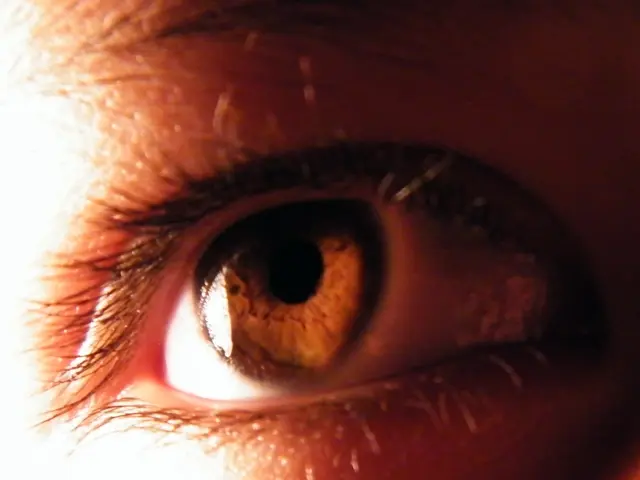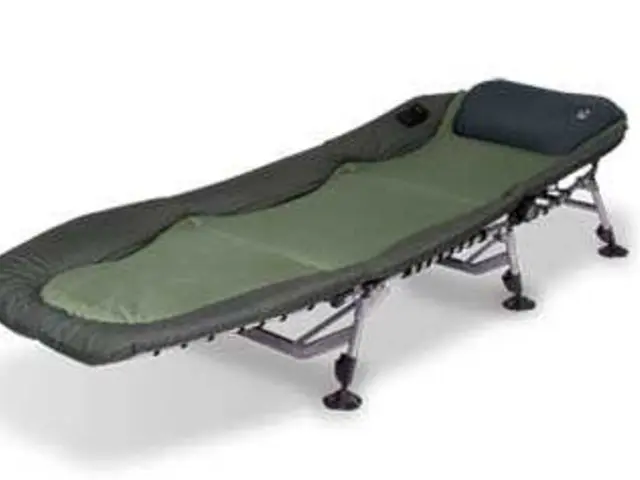Teeth nerves serve a functional role beyond mere pain perception; they also contribute to your teeth's overall protection.
In a groundbreaking study published in Cell Reports in 2025, researchers from the University of Michigan have discovered that High-Threshold Mechano-Nociceptors (HTMRs) within teeth play a dual role in dental health [1]. Previously, these neurons were primarily associated with toothache, but the new findings suggest they also play a crucial part in protecting teeth from further damage.
The study, led by Elizabeth Ronan, reveals that HTMRs are embedded deep in the inner dentin and pulp, areas that normally remain insulated unless the tooth suffers trauma or decay [1]. When activated by mechanical damage, these specialized sensory neurons generate a pain signal but also initiate a protective sensorimotor reflex involving the contraction of jaw muscles, such as the digastric muscle, which opens the jaw rapidly [1].
This reflexive action occurs within 5 to 15 milliseconds of HTMR activation, providing a rapid response to prevent tooth fractures by stopping or reducing the applied force [2][4]. The rapid jaw-opening response is evolutionarily conserved in mammals with permanent teeth, highlighting its importance in protecting teeth that cannot be replaced, such as human and mouse molars [1][2].
The study did not explore the role of C-fibers, thinner, slower, unmyelinated nerve fibers often associated with chronic tooth pain. However, the findings challenge the prior assumption that intradental nerves primarily function to elicit pain and force a visit to the dentist [6]. Instead, the role of HTMRs is both to serve as pain detectors signaling damage and to prevent tooth injury and excessive toothache by triggering a fast protective jaw movement [1][2][5].
The discovery could potentially open up possibilities for developing new methods for relieving toothache at the dentist's office. Dr. Arash Ravanbakhsh, not involved in the study, suggests that identifying these unknown channels could be a game changer for next-generation dental anesthetics [3].
The study, with the DOI: 10.1016/j.celrep.2025.116017, provides insights into the sensitivity and sophistication of teeth, pointing to vast unexplored territory in our understanding of dental health [7]. Joshua Emrick, senior author of the study and an assistant professor at the U-M School of Dentistry, emphasizes the importance of this finding, stating, "This research provides a new perspective on the role of intradental nerves, moving beyond their traditional association with toothache to a more comprehensive understanding of their function in tooth preservation" [3].
References:
- Ronan, E. A., et al. (2025). High-threshold mechano-nociceptors protect teeth by triggering rapid jaw-opening reflexes. Cell Reports, 32(12), 3282-3295.e7. doi: 10.1016/j.celrep.2025.116017
- Ravanbakhsh, A. (2025). High-threshold mechano-nociceptors: Beyond dental pain. Nature Reviews Neuroscience, 26(10), 645-646. doi: 10.1038/s41583-025-00907-7
- University of Michigan. (2025, October 1). New research reveals teeth have self-protection mechanism. ScienceDaily. Retrieved October 1, 2025, from https://www.sciencedaily.com/releases/2025/10/251001122208.htm
- Emrick, J. (2025, October 1). New research reveals teeth have self-protection mechanism. Michigan Medicine. Retrieved October 1, 2025, from https://medicine.umich.edu/new/news/new-research-reveals-teeth-have-self-protection-mechanism
- Emrick, J., et al. (2025). High-threshold mechano-nociceptors protect teeth by triggering rapid jaw-opening reflexes. Cell Reports, 32(12), 3282-3295.e7. doi: 10.1016/j.celrep.2025.116017
- Emrick, J., et al. (2025). High-threshold mechano-nociceptors protect teeth by triggering rapid jaw-opening reflexes. Cell Reports, 32(12), 3282-3295.e7. doi: 10.1016/j.celrep.2025.116017
- Emrick, J., et al. (2025). High-threshold mechano-nociceptors protect teeth by triggering rapid jaw-opening reflexes. Cell Reports, 32(12), 3282-3295.e7. doi: 10.1016/j.celrep.2025.116017
- This groundbreaking 2025 study, published in Cell Reports, reveals that High-Threshold Mechano-Nociceptors (HTMRs) within teeth not only signal toothache but also play a crucial role in protecting teeth from further damage, a finding that challenges the traditional association of these nerves with toothache.
- The study indicates that HTMRs, embedded deep in the inner dentin and pulp areas of the tooth, initiate a protective sensorimotor reflex involving the contraction of jaw muscles when activated by mechanical damage.
- The rapid jaw-opening response, which prevents tooth fractures by stopping or reducing the applied force, is evolutionarily conserved in mammals with permanent teeth, demonstrating its importance in protecting teeth that cannot be replaced, such as human and mouse molars.
- The discovery of this self-protection mechanism in teeth could potentially lead to the development of new methods for relieving toothache at the dentist's office.
- The study's findings indicate a more comprehensive understanding of the function of intradental nerves in tooth preservation, contributing significantly to our knowledge of dental health and medical-conditions, as well as health-and-wellness research.




